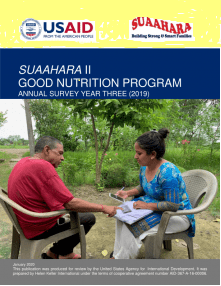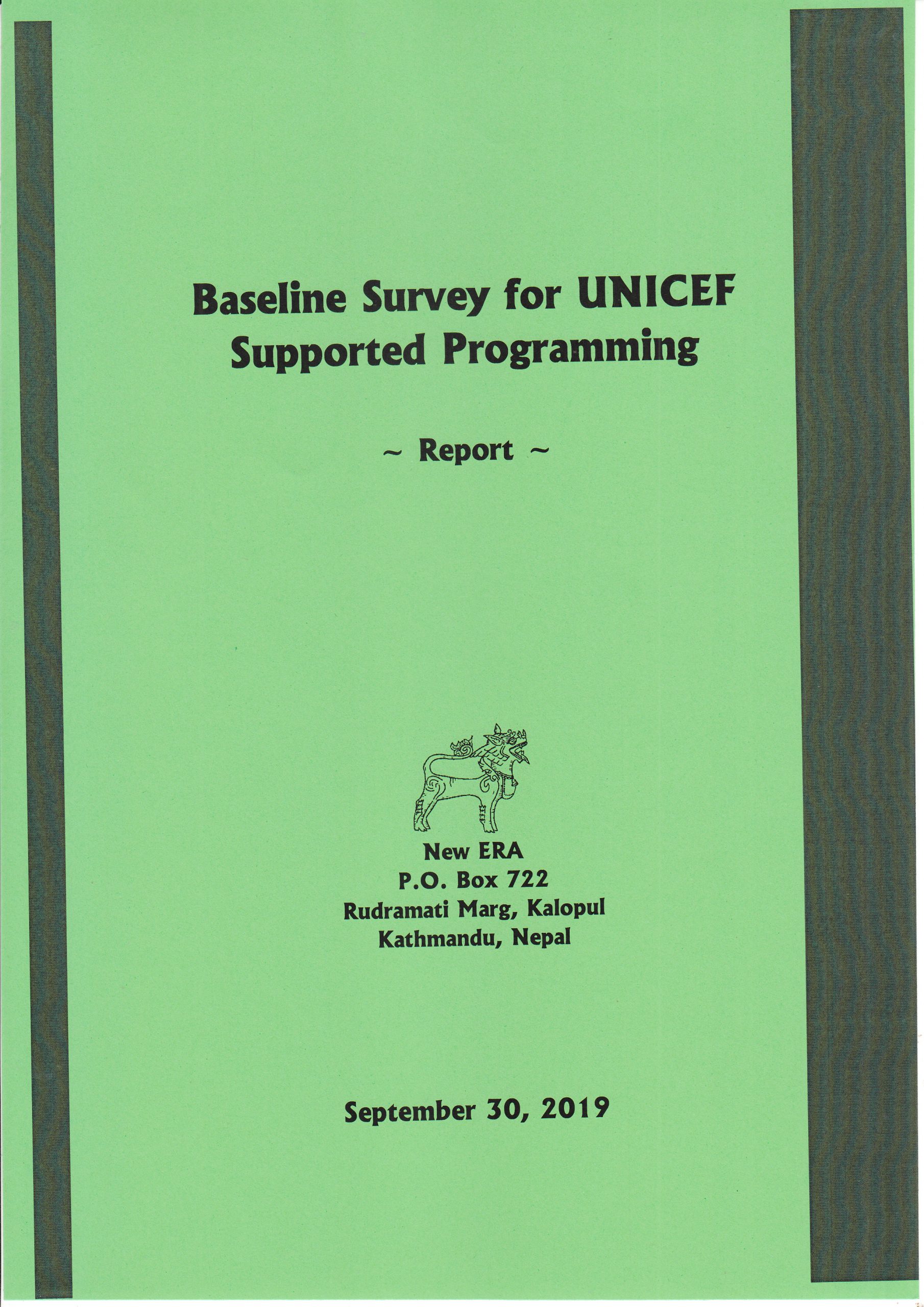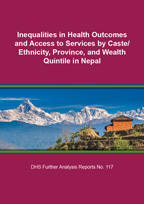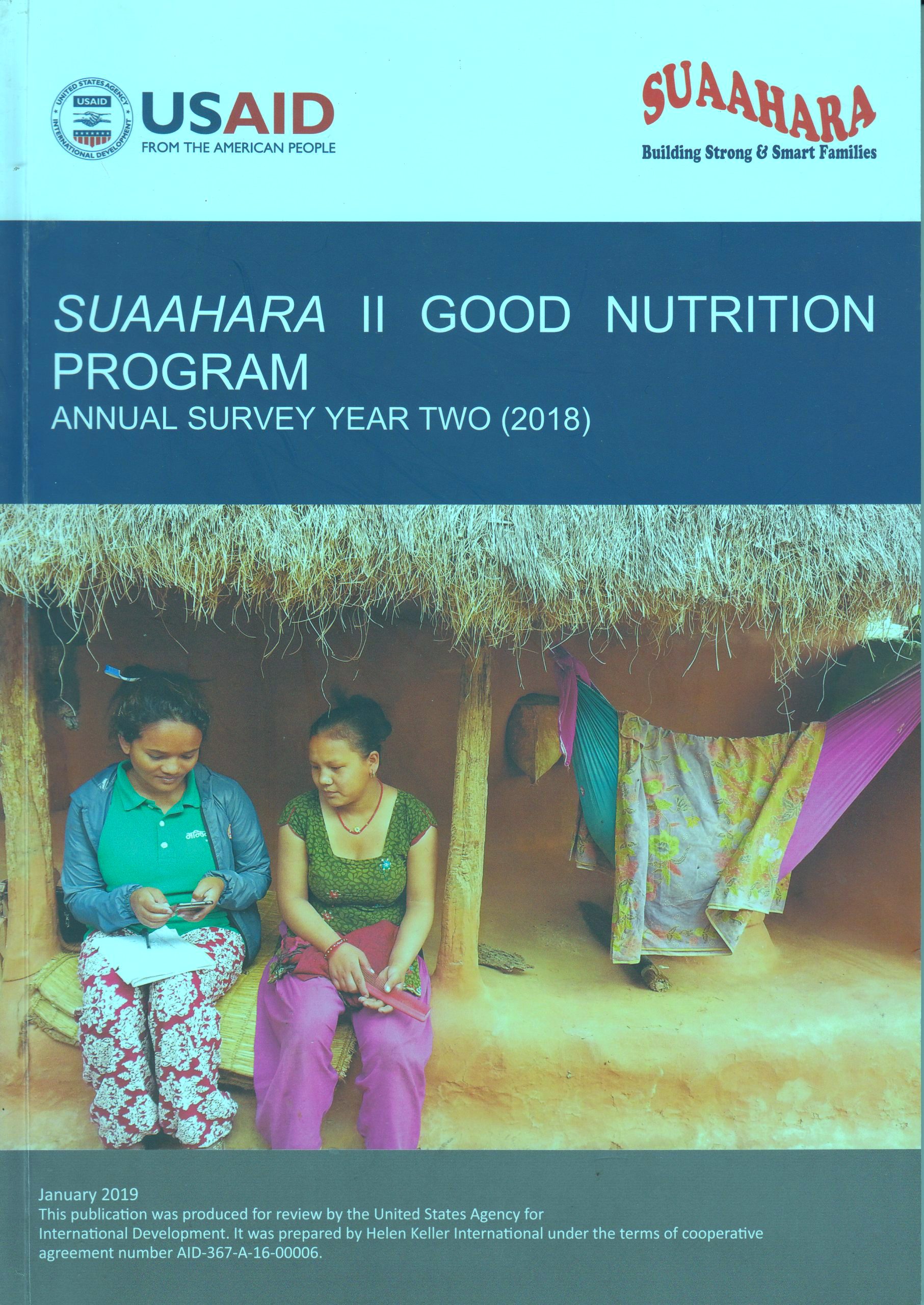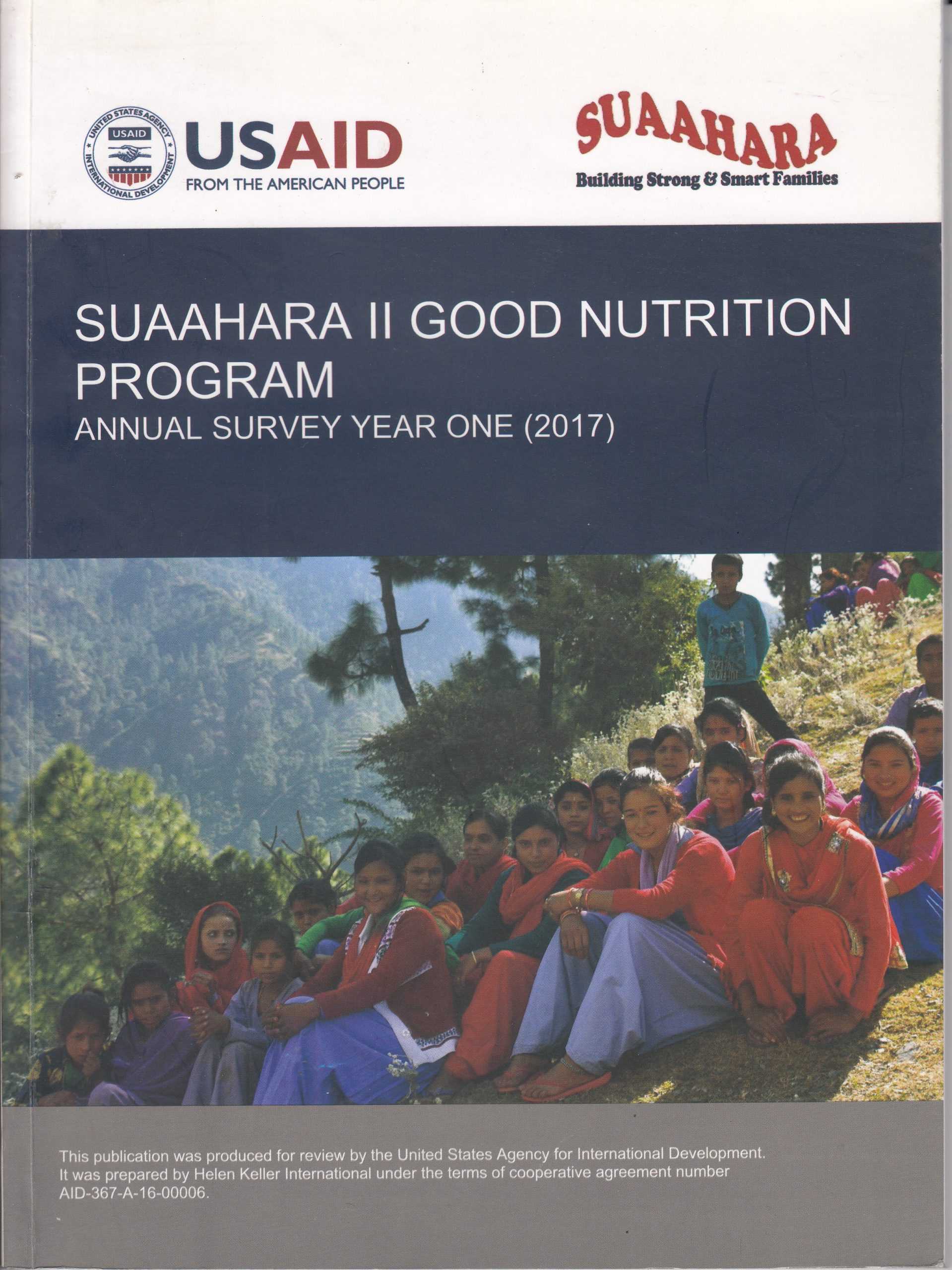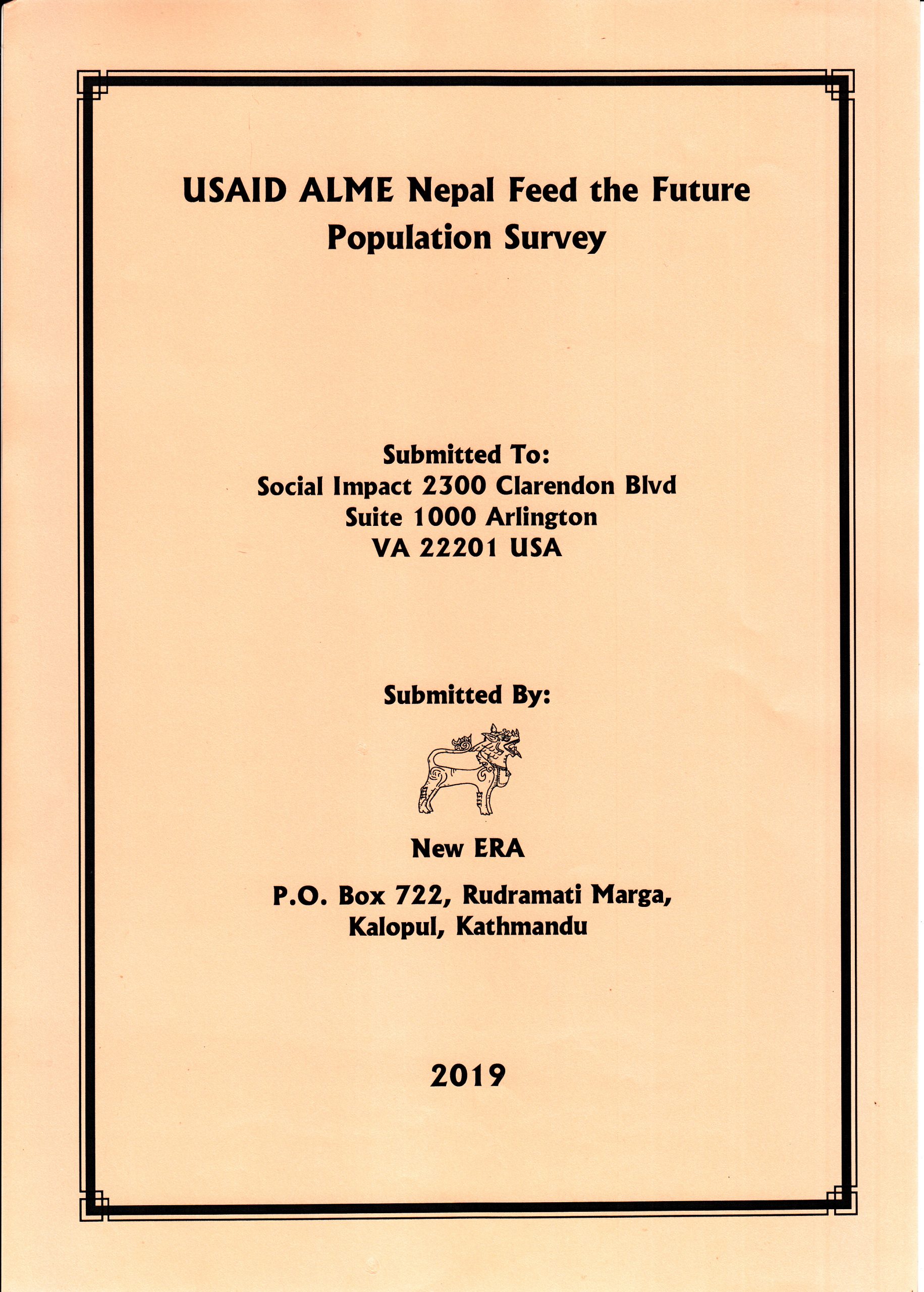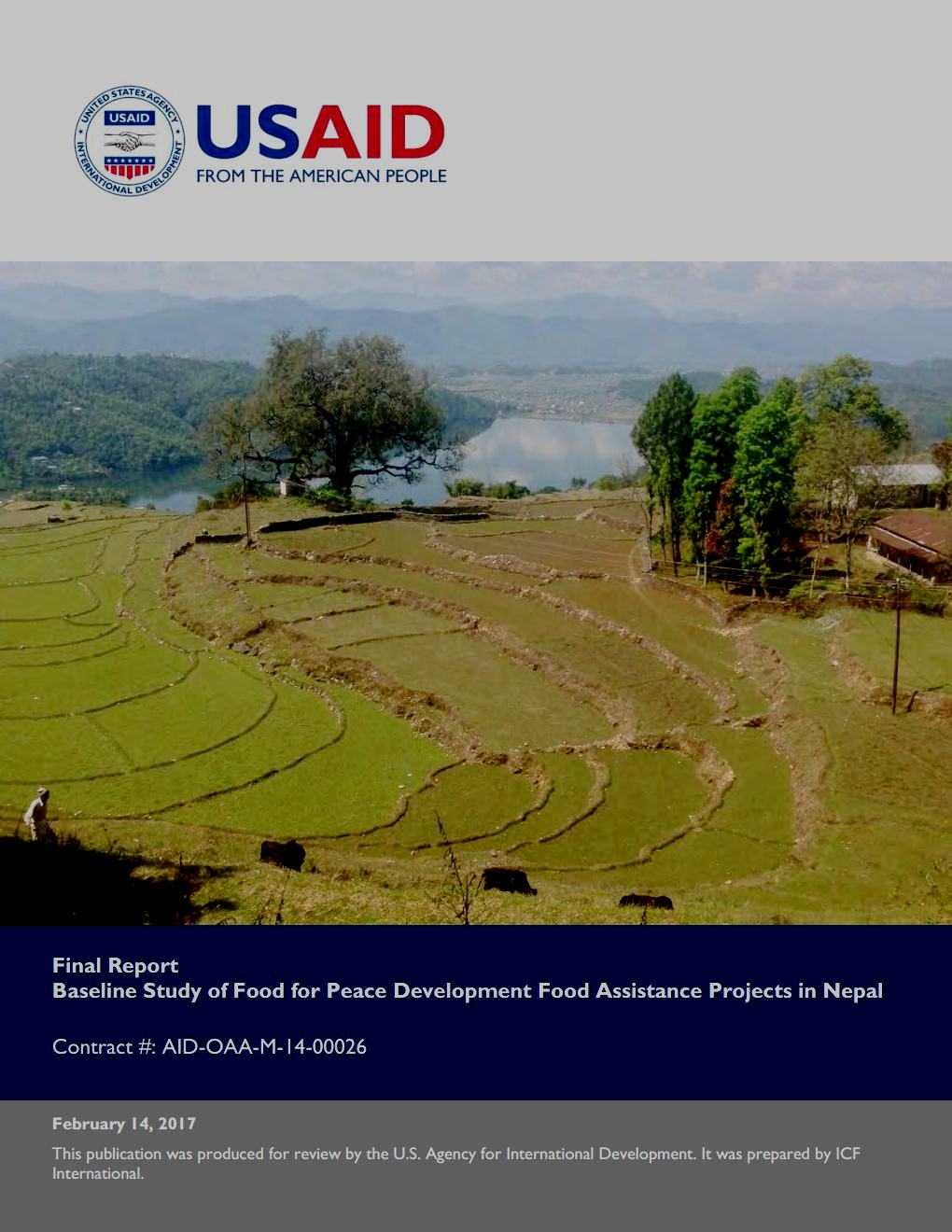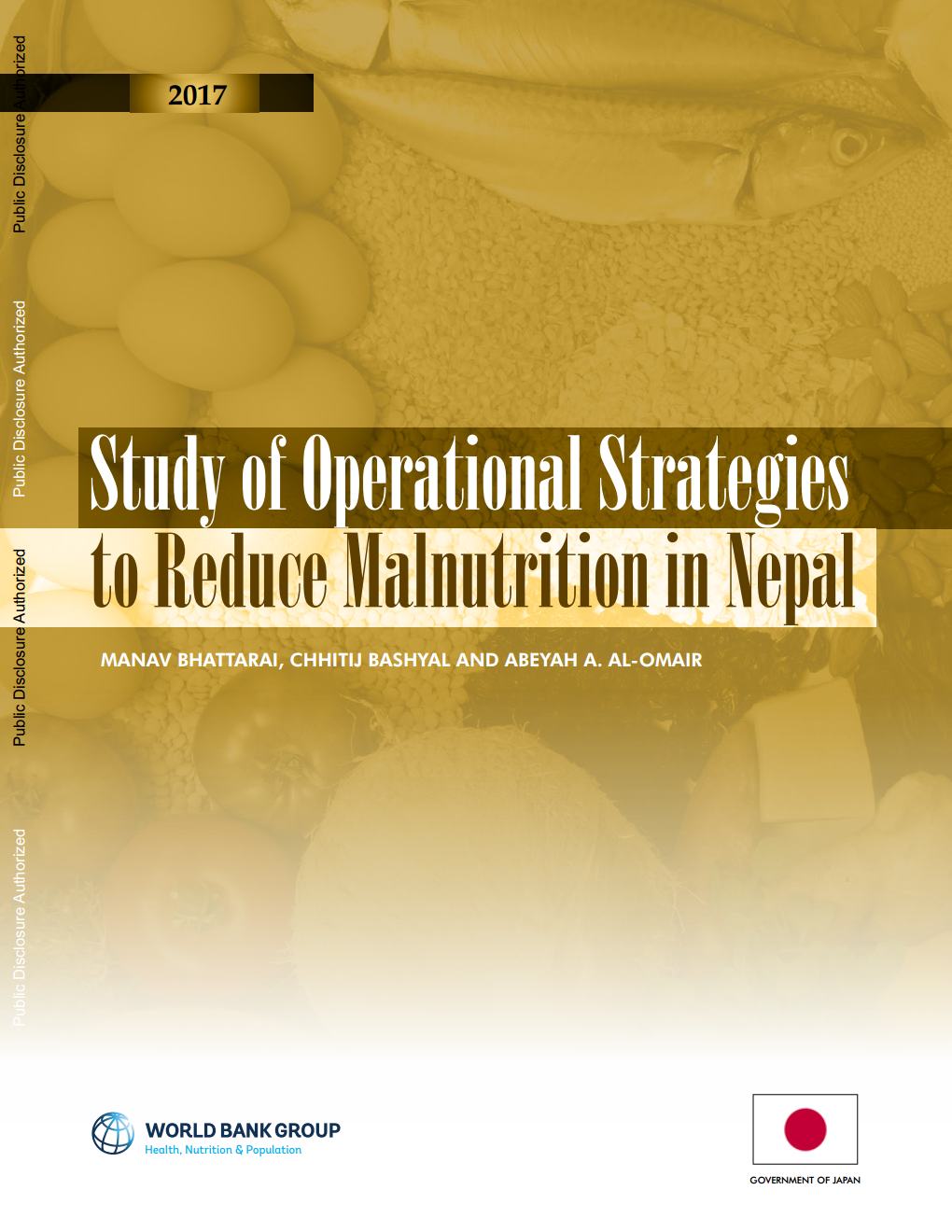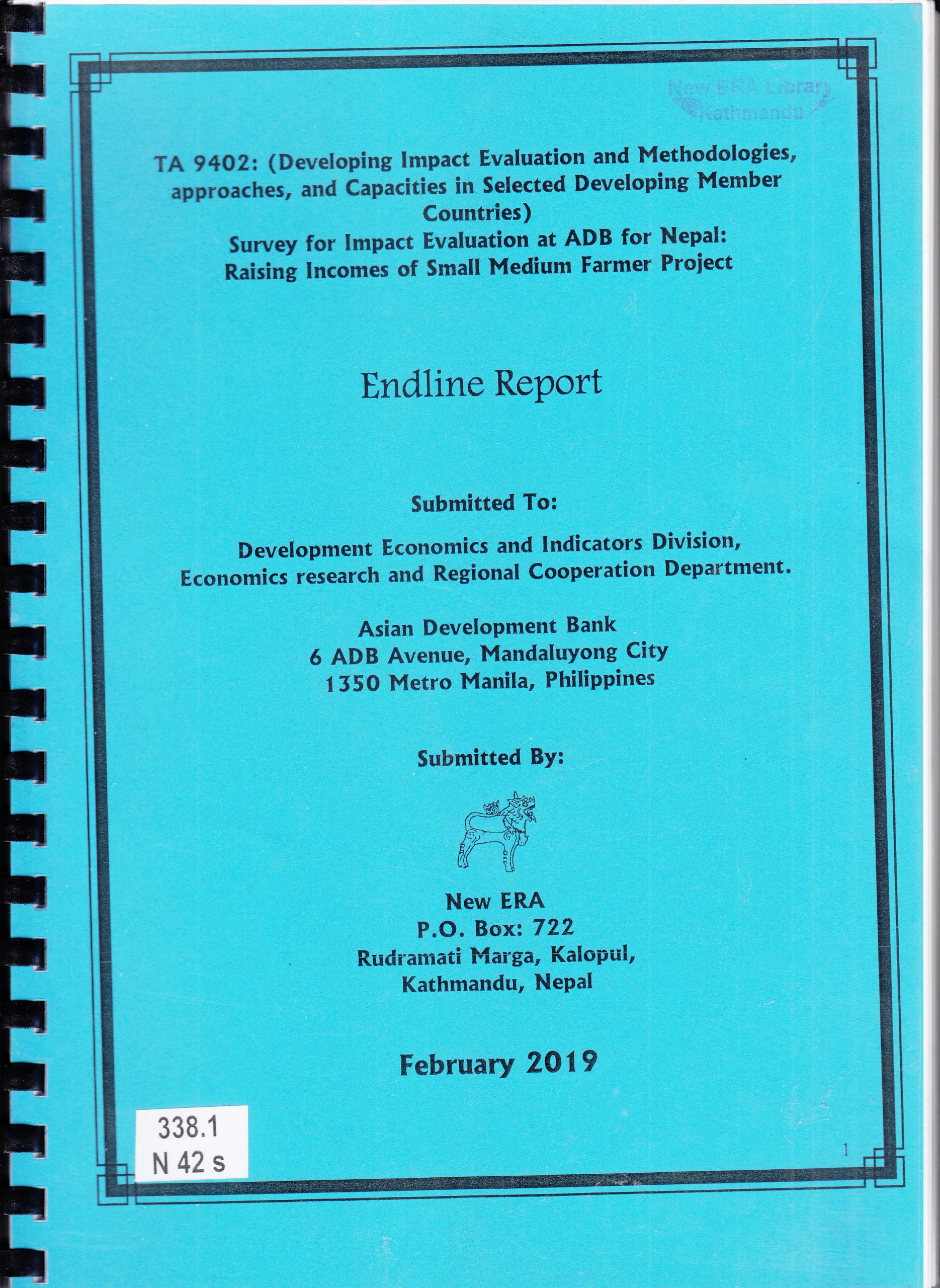This third year annual monitoring panel survey of Suaahara II (SII) was to monitor progress over time related to key inputs, outputs outcomes and impacts in program interventions community. The study assessed the knowledge and practices for each of the thematic areas including nutrition, health and family planning, water, sanitation and hygiene (WASH), agriculture/homestead food production; and governance using gender equality and social inclusion (GESI) approaches. Anthropometric status was also assessed all reproductive age women, children under five and adolescent girls of study community.
Report Type: Nutrition
Baseline Survey for UNICEF Supported Palikas
The purpose of the survey was to establish baseline indicators to selected palikas of Nepal. The study will assess outcome, output and process indicators on quality of preschool and basic education; universal access to quality health services; well nourished; access to safe water and toilets at household level and good hygiene practices; access to quality maternal care of all mothers; living in safe, supportive and caring family environment; access to information, knowledge, skill and adolescent-responsive social services among adolescents people of 32 districts among 2, 5, 6 and 7 Provinces of Nepal.
Further Analysis of 2016 Nepal Demographic and Health Survey
This further analysis study of 2016 NDHS was implemented New ERA under the aegis of Ministry of Health and Population of Nepal with financial support of USAID and technical assistance was provided by ICF International. The primary objective of this study was to provide more in-depth knowledge and insights into key issues that emerged from the 2016 NDHS. The information of this further analysis provides guidance for planning implementing, refocusing, monitoring and evaluating health programs in Nepal. The further analysis is published in different seven topics:
- Youth Health in Nepal: Levels, Trends, and Determinants (NDHS 2016 FA 116)
- Inequalities in Health Outcomes and Access to Services by Caste/Ethnicity, Province, and Wealth Quintile in Nepal (NDHS 2016 FA 117)
- Maternal Health Care in Nepal: Trends and Determinants (NDHS2016 FA118)
- Unmet Need for Family Planning and Fertility in Nepal: Levels, Trends, and Determinants (NDHS2016 FA119)
- Childhood Illness and Mortality in Nepal: Trends and Determinants (NDHS2016 FA120)
- Factors Affecting Vaccination Coverage and Retention of Vaccination Cards in Nepal (NDHS2016 FA121)
- Child Undernutrition and Feeding Practices in Nepal: Trends, Inequities, and Determinants (NDHS2016 FA122)
Suaahara II Good Nutrition Program: Annual Monitoring Survey Year 2 (2018)
Suaahara II (SII) is a USAID funded five year (2016 -2021) program implemented in 42 out of 77 districts of Nepal under National Multi-Sectoral Nutrition Plan (MSNP). The SII aims to reduce the prevalence of stunting, wasting and underweight among children under five years and to reduce the prevalence of anemia among reproductive age women and children age of 6-59 months. The objective of this year two panel survey of the SII was to monitor progress over time related to key inputs, outputs outcomes and impacts in program interventions community. The study assessed the knowledge and practices for each of the thematic areas including nutrition, health and family planning, water, sanitation and hygiene (WASH), agriculture/homestead food production; and governance using gender equality and social inclusion (GESI) approaches. Anthropometric status was also assessed all reproductive age women, children under five and adolescent girls of study community.
Suaahara II Annual Monitoring Survey Year I
Suaahara II is a USAID funded five years (2016-2021) program implemented in 40 districts across all geographic regions of Nepal with aims to improve the nutritional status of women and children. The program was designed a multi-sectoral strategy approaches (i) improved household nutrition, sanitation and health behavior (ii) increased quality of nutrition and health services by women and children (iii) improved access to diverse and nutrient rich foods by women and children and (iv) accelerated roll-out of the Multi-sector Nutrition Plan through strengthen local governance. This panel survey was to monitor progress over time related to key input, outputs outcomes and impacts of the program intervention community. The study assessed the knowledge and practices for each of the thematic areas such as nutrition; health and family planning; water, sanitation and hygiene; agriculture production; gender equity and social inclusion. Anthropometric status was also assessed all reproductive age women, children under five and adolescent girls of study community.
USAID ALME Nepal Feed the Future Population Survey
The Feed the Future (FTF) program is a US Government’s Global Hunger and Food Security Initiative. The program led by USAID was designed to address food insecurity by supporting agriculture sector growth and improving nutritional status in 19 developing countries including Nepal. In Nepal it was implemented in 20 food insecure districts with aims to reduce poverty, and under nutrition through accelerating growth of the agriculture sector addressing root causes of under nutrition, and reducing gender inequality. This study was designed to establish an endline indicator for the first phase of FTF and a baseline for the second phase of project in Nepal. The study assessed agriculture productivity; per capita income; prevalence of poverty; women’s empowerment; dietary diversity; nutrition status; appropriate feeding practices, and hygienic environments among the study community.
Baseline Study of Food for Peace Development Food Assistance Projects in Nepal
Food for Peace (FFP), a USAID initiative five-year program is implemented in many food insecure developing countries to strengthen livelihoods, improve nutritional status and increase the capacity of vulnerable households for mitigating, adapting and recovering from shocks and stresses in communities with deep poverty and high rates of malnutrition within the program areas. This Nepal chapter survey was designed to obtain baseline indicator on food security, agriculture production, livelihoods, health, and nutrition especially among children under the age of two, pregnant and lactating women.
Follow-up MNP/IYCF Survey
Maternal and Young Child Nutrition Security Initiative in Asia (MYCNSIA) was implemented UNICEF partnership with European Union (EU) in five countries, including Nepal. This 4-years project goal was to improve nutrition security of women and young children in Asia. This survey was to scaling-up the IYCF/MNP Baal Vita intervention, including implementing an impact evaluation in two (Kapilvastu and Achham) of the nine new project districts. The study assesses the changes in nutritional and micro-nutritional status of children age of 6-23 months, and infant and young child feeding and early childhood development practices of families after 3 years of the program intervention.
A Study to Develop Operational Strategy to Reduce Malnutrition in Nepal
This study was conducted to identify and understand key bottlenecks of nutrition operations in Nepal and provide strategies and recommendations to overcome those challenges to achieve more effective and sustainable nutrition outcomes. The study generated rigorous evidence to make decisions around three areas of intended impact of the study: (i) Generating high social returns on investments in nutrition and food security programs for greater financial efficiency, (ii) Matching supply and demand of nutritional responses for greater technical effectiveness and (iii) Effective program design and engagement strategy for future WB programs on nutrition.
Endline Survey for the Impact Evaluation of the Agriculture and Food Security Project (AFSP)
The Agriculture and Food Security Project (AFSP) project was implemented by the Ministry of Agriculture Development (MoAD) and the Ministry of Health (MoH) to address food security and agricultural productivity in 19 hill and mountain districts of the Mid-and Far-Western development region of Nepal. This survey assesses the effectiveness of the project in regards to improved agricultural technology and seed adoption, productivity of the food crops, livestock reading practice, and farmer income. The study also assesses nutrition of young children and pregnancies or breastfeeding mothers, kitchen gardening, livestock rearing, behavior change of the project community.



